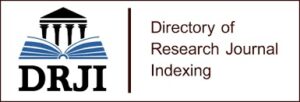Good governance as the second generation of reforms developed by international financial institutions for countries in the southern hemisphere to achieve development: ruptures, changes, and continuities
Following the process of decolonization in the second half of the twentieth century, the newly-independent countries adopted various strategies to emerge from underdevelopment, all strongly influenced by the ideological context of the time. From the 1950s onwards, most developing countries adopted industrialization strategies to the detriment of the agricultural sector. These strategies differed in terms of the role to be given to international trade: self-centered development seeking to replace imports with domestic industry, or extroverted development based on export promotion. Each of these strategies seeks to shift the structure of national production towards more sophisticated industrial products. Faced with the numerous failures of these strategies, the international financial institutions (International Monetary Fund and World Bank) developed a development model to accompany their loans to developing countries: “structural adjustment”. This liberal model required developing countries to stabilize their macroeconomic situation and liberalize their economies through the “Washington Consensus”.) The financial crises experienced by many of the countries that followed this model in the 1990s and 2000s led to widespread criticism: the model was ill-suited to the specific characteristics of developing countries, and the measures were brutal and destabilizing for the economic and social structure of these countries (weakening of the state, etc.). Underdevelopment is thus due to the absence of institutions to support structural adjustment programs (SAPs). The latter must therefore be accompanied by additional reforms designed to create social institutions that facilitate liberal reforms. Thus, at the end of the 1990s, the “Washington Consensus” was supplemented by new measures: the introduction of corporate governance, the need to combat corruption and create a “safety net” in the form of social security, and the fight against poverty. As a result, the elaboration of a new development paradigm has revolved around several key ideas since 2000: relying on local institutions (in particular the State), accompanying economic measures with social and democratic policies to increase freedoms, recasting development strategies according to the principles of sustainable development and good governance. Good governance has thus become an absolute priority for the World Bank and the International Monetary Fund, to counter the harmful effects of economic policies and restore hope to the populations of the South. We will begin by examining the origins of this notion, then explain its various meanings, show the different approaches that have been developed around this concept and finally develop our own point of view on North/South cooperation relations.
Keywords: World Bank, International Monetary Fund, southern hemisphere, development, underdevelopment, structural adjustment, poverty, decentralization, good governance.




















